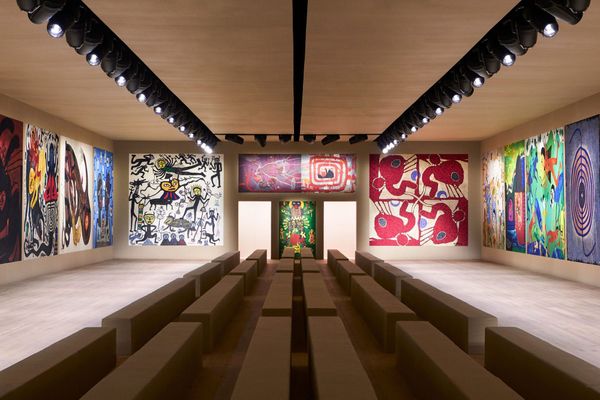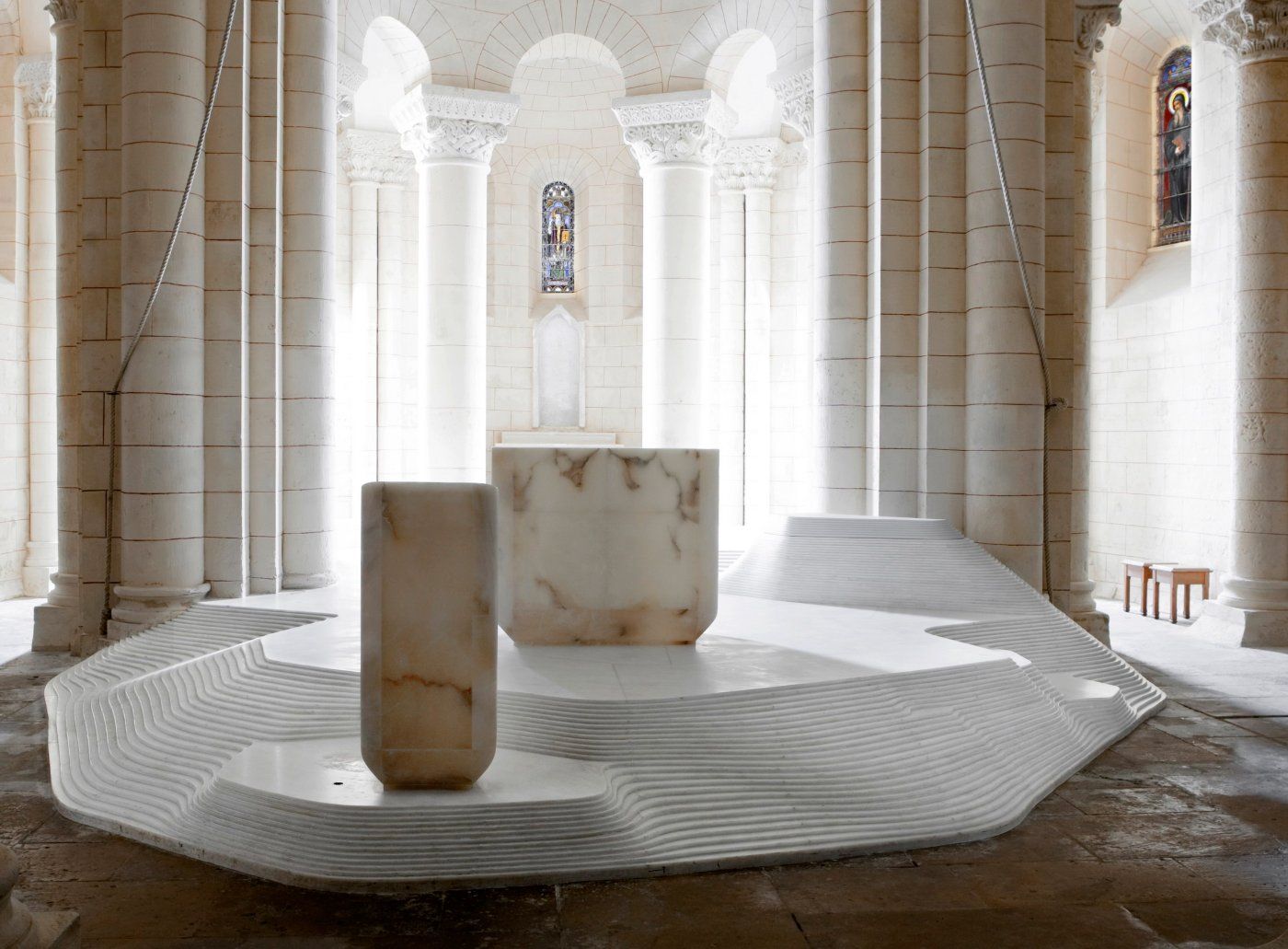In the French department of Deux-Sèvre, a Romanesque church got a surprising makeover. Mathieu Lehanneur introduced an architectural gesture into the religious space that is, without doubt, a milestone in the contemporary direction of sacral arts.
Mathieu Lehanneur is on the frontlines of international design, and his illustrious projects blend the barriers between product design, architecture, artisanal handicraft, technology and science. According to his artistic credo, the truly unique pieces are born hovering on the edges of dreams and science, transcendence and intelligence, along with the physical and intellectual sphere.
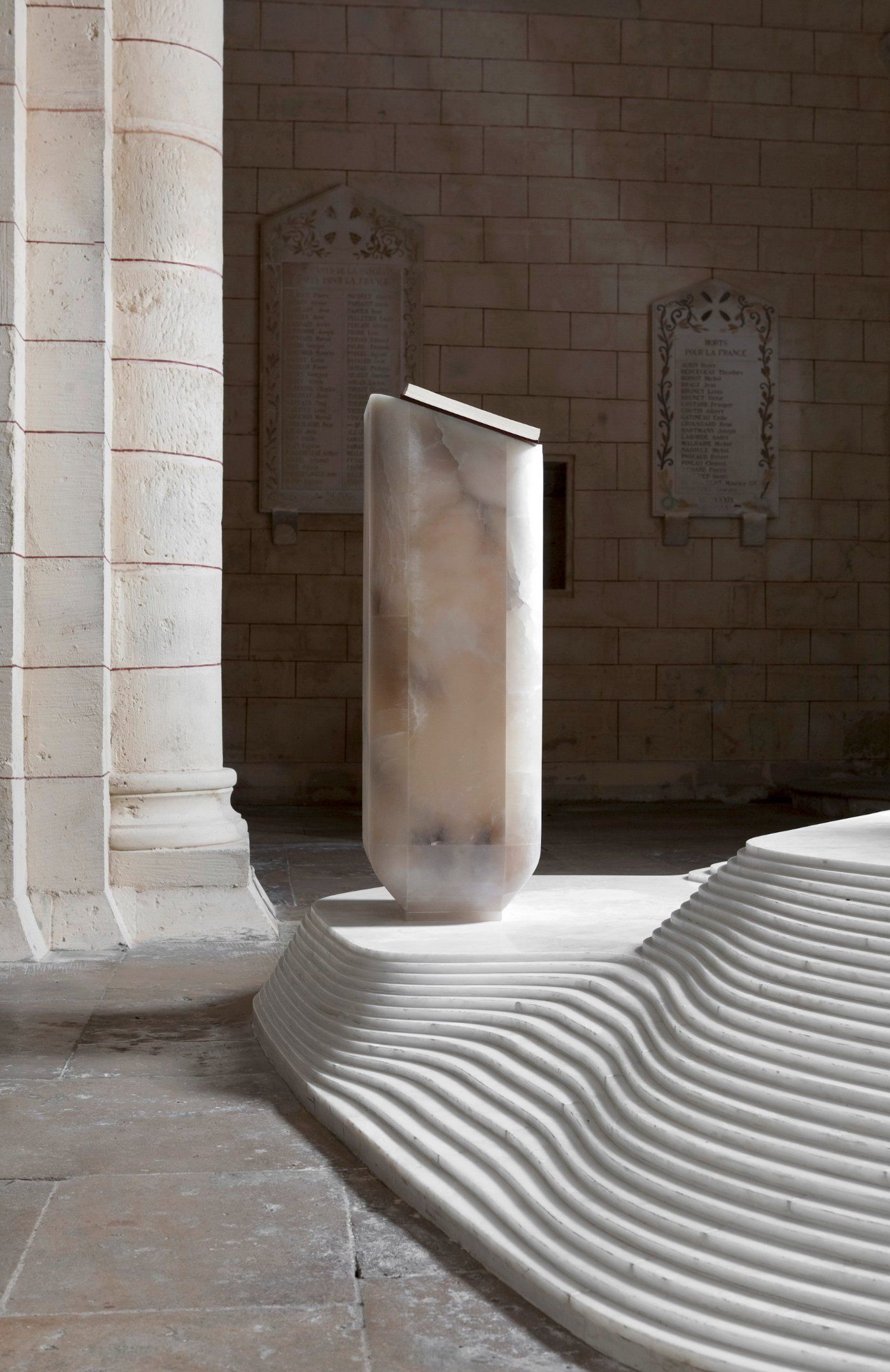
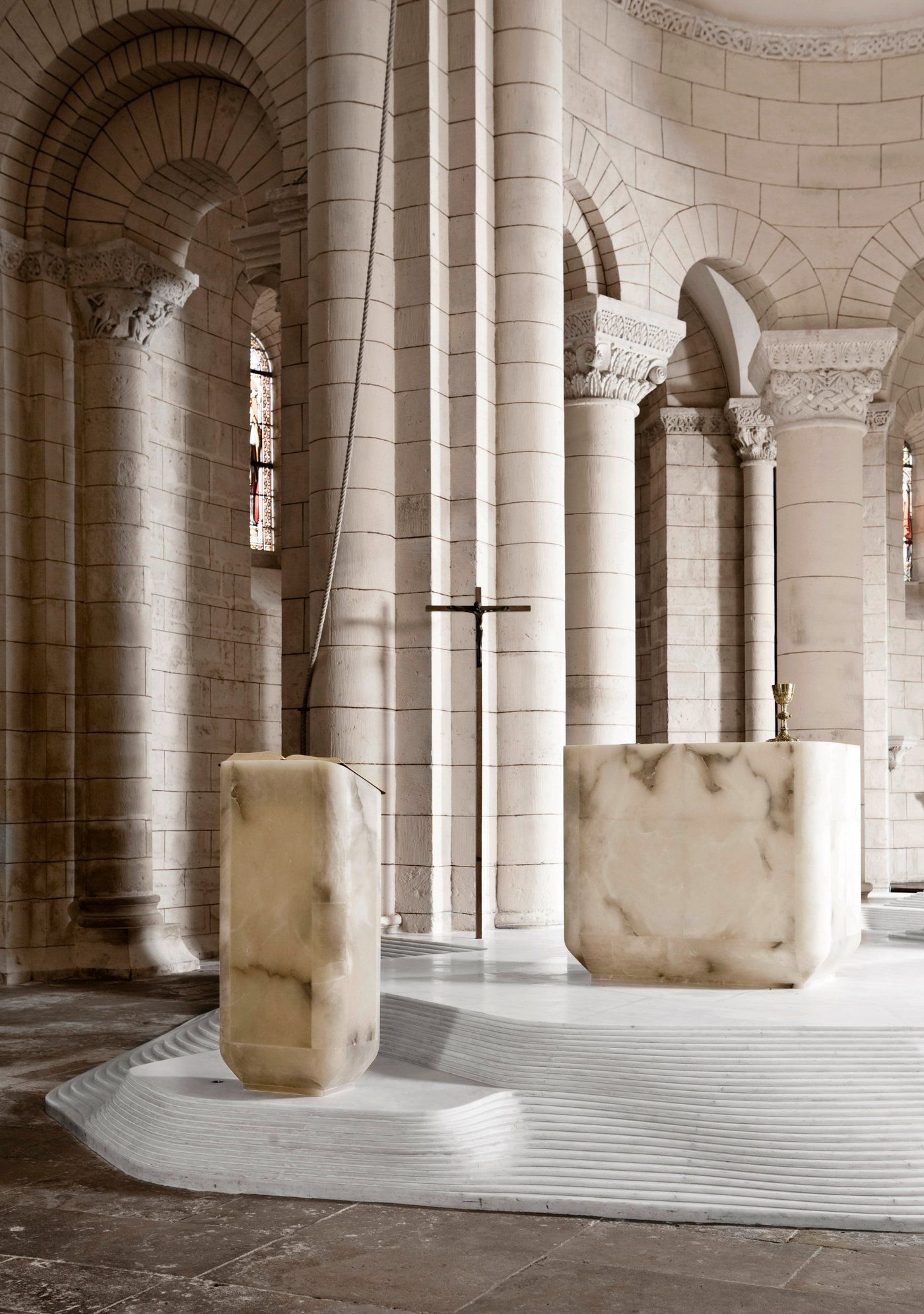
Mathieu transformed the chancel of the St Hilaire church with layers of marble stacked on top of each other. The undulating effect of white marble forms a homogeneous mineral block that evokes the sedimentation of the bedrock. The concept was inspired by the topology of the place itself—a sight now seated deeply into its environment with an excavation of a sunken ‘box’. The project shows us the importance of continued discovery and the deep feeling of finding one’s roots—inviting the visitors to access deeper layers of knowledge: “In my mind, the constructed ‘box’ sunk into the ground almost feels as if it were pushed down by the hands of a god, simultaneously opening up the geology of the place with the visible aspects of its mineral form. However, It did not feel like a belated addition, more so as something already preceding the arrival of the church itself,” said the artist.
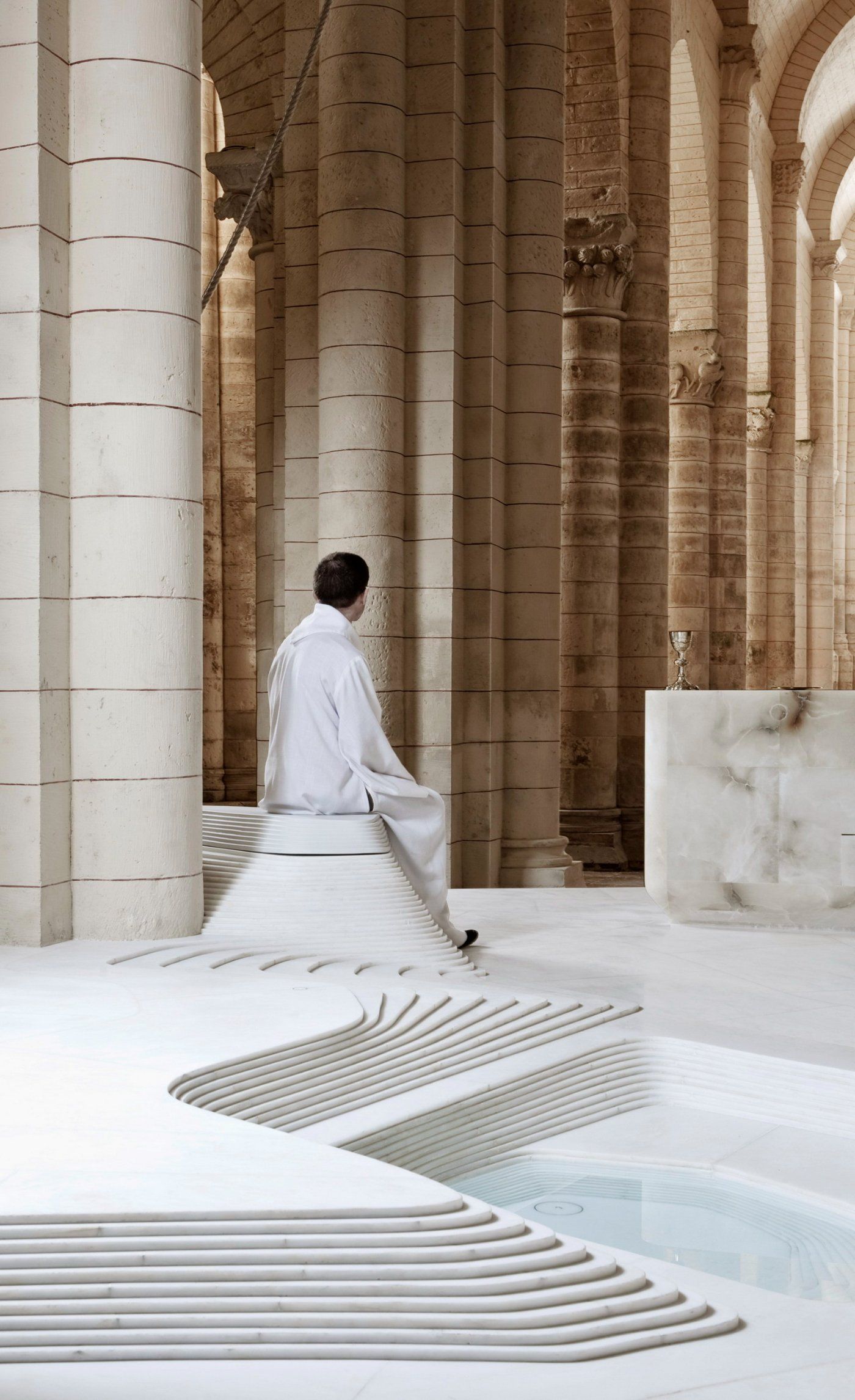
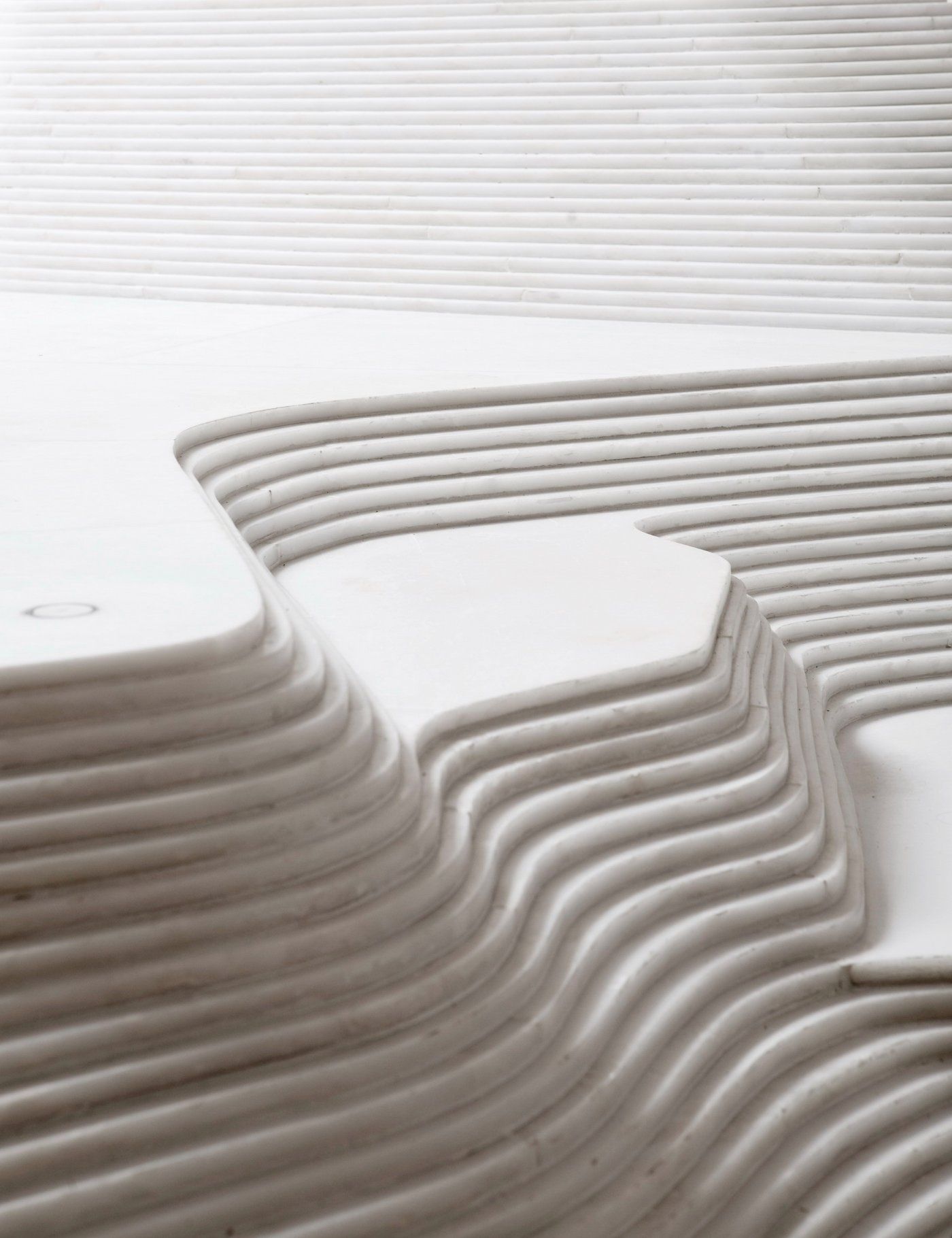
Upon first look, the openly contemporary architectural intervention shows a striking departure from the conventional aesthetics of temples. In the end, however, it all blends into one coherent picture as it doesn’t try to rewrite the atmosphere and significance of the sanctuary; it simply thrives to unfold further layers of meaning. The geological patterns comparable to parametric design are meant to highlight the perfection of Romanian geometry. Completed by the trickling stream visible under the steps of the baptistry, the overall effect enhances the connection between the religious edifice and its natural environment.
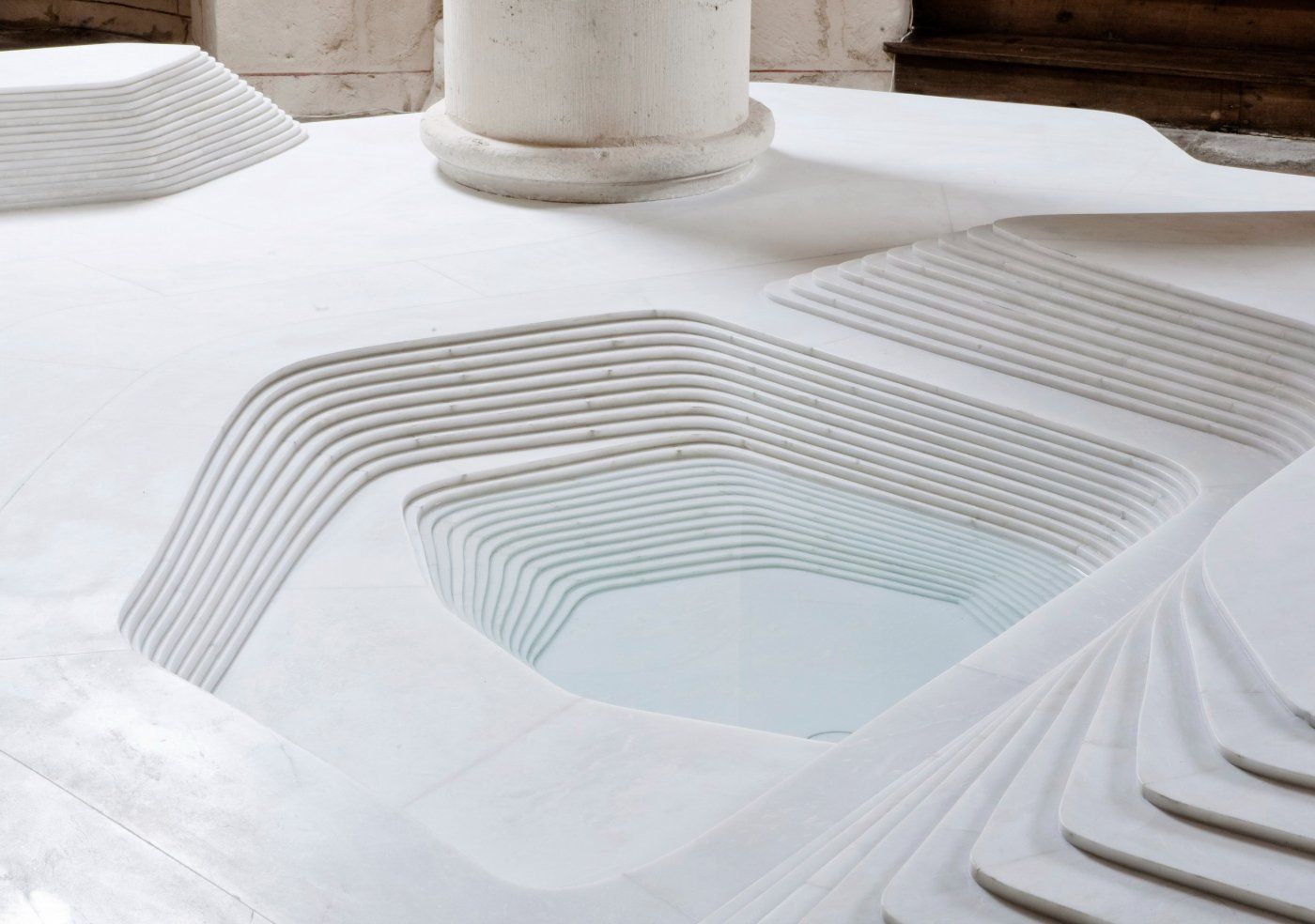


Jeff Koons used a BMW as his canvas this time

Handwritten jottings or digital notes in the cloud? No need to choose!
